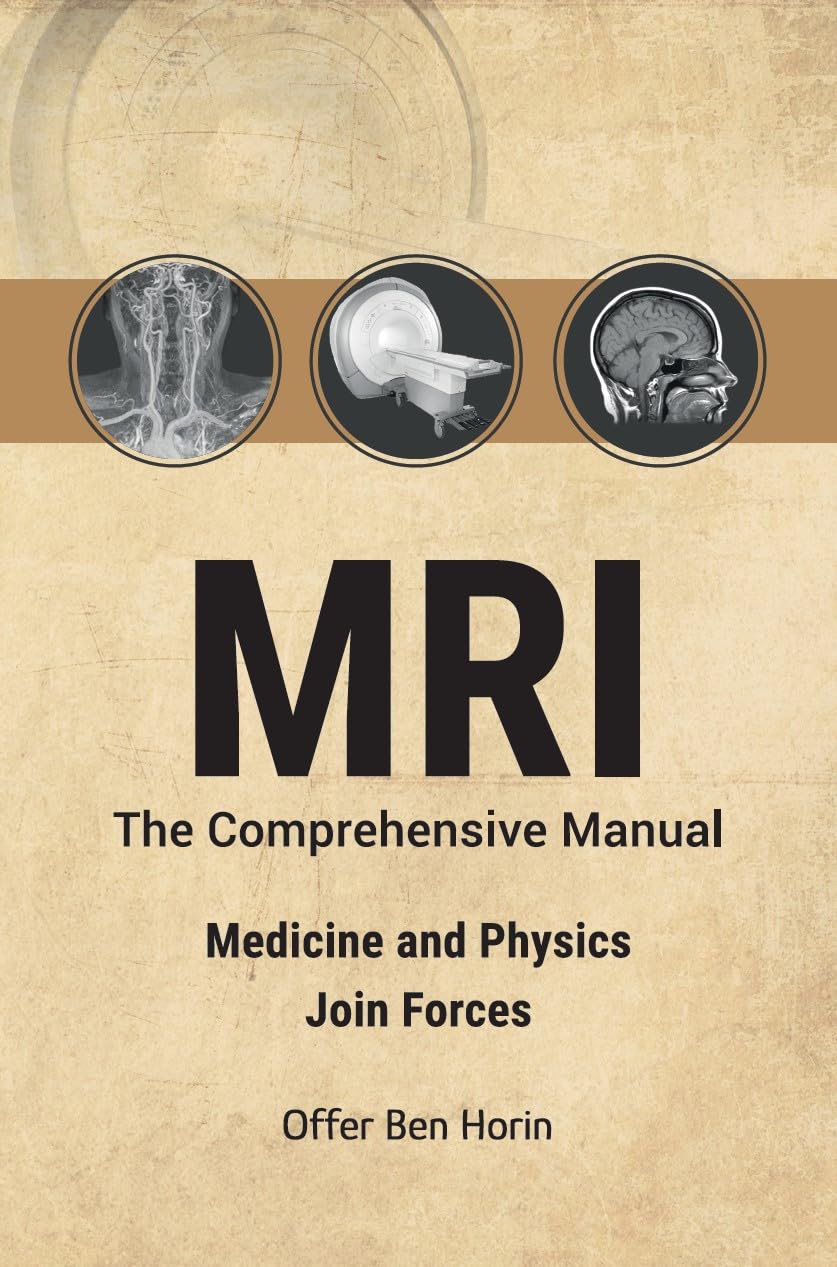Offer Ben Horin
MRI – The Comprehensive Manual
MRI – The Comprehensive Manual
Couldn't load pickup availability
Product details
- Language : English
- File size : 1.9 MB
- Text-to-Speech : Enabled
- Screen Reader : Supported
- Enhanced typesetting : Enabled
- X-Ray : Not Enabled
- Word Wise : Enabled
- Print length : 345 pages
Medical technologies are at the forefront of modern medicine, and among the most notable is Magnetic Resonance Imaging (MRI), which is utilized in MRI scanners, functional MRI (fMRI), and Nuclear Magnetic Resonance (NMR) devices.
"MRI: The Comprehensive Manual – Medicine and Physics Join Forces" is a unique MRI manual designed for both beginners and seasoned professionals in the medical imaging field. The book provides a clear, engaging explanation of Magnetic Resonance Imaging, combining fundamental principles with practical clinical applications. Whether you're new and need an MRI beginners guide or a seasoned expert aiming to deepen your understanding of MRI Physics, this comprehensive guide covers both theoretical knowledge and real-world applications, making complex topics enjoyable and accessible for readers of all levels.
Ideal for anyone in Diagnostic Medical Imaging, this manual provides essential tools and knowledge to excel in this complex, evolving field, making it a valuable resource for both beginners and MRI professionals.
In this book, you will:
- Acquire a solid comprehension of the physics principles that underlie the MRI scanner and the NMR device.
- Familiarize yourself with the pros and cons of current imaging techniques and examine how the MRI scanner fits into this landscape.
- Gain knowledge about the diverse range of MRI examinations and applications.
- Explore the history of the discovery of the magnetic resonance principle and the invention of MRI and discover what advancements are in store for the future.
- Review the latest research and future trends in the field of MRI, with a dedicated chapter exploring groundbreaking studies and innovations.
This book includes dozens of examples, illustrations, and photographs to facilitate easy and immersive reading for anyone interested in gaining knowledge, studying, or delving deeper into the fields of MRI and medical imaging.
Offer Ben Horin, the author of this book, has over three decades of experience in MRI research, applications, and training. In addition to his professional work in medical imaging, he is also a science writer and a renowned science communicator worldwide. He is a father of two sons and two daughters, and this is his second book.
From the book's Table of Contents:
- The discovery of NMR and the contributions of Felix Bloch and Edward Purcell.
- The invention of MRI, with key figures like Paul Lauterbur, Peter Mansfield, and Raymond Damadian.
- The 2003 Nobel Prize controversy and the development of the first MRI scanners.
- Basic concepts like the proton, electron, spin, vectors, precession, magnetism, and electromagnetism.
- Electromagnetic waves and their role in MRI processes.
- Magnetic resonance phenomena and their expression in MRI imaging.
- The physics behind MRI: spin, precession, Larmor equation, Zeeman effect, and magnetic resonance signals.
- Relaxation processes (T1, T2), image creation (T1, T2, PD), and sequences like Spin Echo, Inversion Recovery, STIR, and FLAIR.
- The role of gradients and coils in MRI systems, and Fourier Transform and K-Space principles.
- MRI artifacts like movement, flow, metal, and magnetic sensitivity artifacts.
- The comparison of MRI with other imaging techniques such as X-ray, CT, PET, and ultrasound.
- Special MRI examinations like MRA, MRV, DMRI, MRS, MRCP, MRE, MRM, and more.
- Applications like fMRI, DTI, FUS, MEG, and non-medical uses of MRI.
- Future advancements in MRI technology, include quieter and stronger scanners, room-temperature superconductivity, and new contrast agents.
- Cutting-edge fMRI applications for brain activity decoding, robot control, vegetative patient communication, and identifying dream content.
Share


